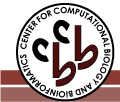| General information | | DisProt: | DP00017 | | Name: | Cyclin-dependent kinase inhibitor 1C | | Synonym(s): | CDN1C_HUMAN
Cyclin-dependent kinase inhibitor p57
p57KIP2
| | First appeared in release: | Release 2.0 (02/14/2005) | | UniProt: | P49918 | | UniGene: | Hs.106070 | | SwissProt: | CDN1C_HUMAN | | TrEMBL: | | | NCBI (GI): | 1705731 | | Source organism: | Homo sapiens (Human) | | Sequence length: | 316 | | Percent disordered: | 100% | | Homologues: | |
| Native sequence |
10 20 30 40 50 60
| | | | | |
MSDASLRSTS TMERLVARGT FPVLVRTSAC RSLFGPVDHE ELSRELQARL AELNAEDQNR - 60
WDYDFQQDMP LRGPGRLQWT EVDSDSVPAF YRETVQVGRC RLLLAPRPVA VAVAVSPPLE - 120
PAAESLDGLE EAPEQLPSVP VPAPASTPPP VPVLAPAPAP APAPVAAPVA APVAVAVLAP - 180
APAPAPAPAP APAPVAAPAP APAPAPAPAP APAPAPDAAP QESAEQGANQ GQRGQEPLAD - 240
QLHSGISGRP AAGTAAASAN GAAIKKLSGP LISDFFAKRK RSAPEKSSGD VPAPCPSPSA - 300
APGVGSVEQT PRKRLR
|
| Functional narrative |
Cyclin-dependent kinase inhibitor p57 is a member of the p21 family of cell cycle inhibitors. p57 is found associated with the cell cycle, in the nucleus of the cell. It blocks cyclin-dependent kinases from advancing the cell from the G1 to S phase. p57 also plays a role in development and differentiation. p57 has been implicated in Beckwith-Wiedemann Syndrome and tumor formation. It has been shown to bind multiple cyclin-CDK complexes. P57 may be essential in maintaining cells in a non-proliferative state throughout the life of the cell.
|
| Map of ordered and disordered regions |


Note: 'Mouse' over a region to see the start and stop residues. Click on a region to see detailed information.
|
| Region 1 | | Type: | Disordered - Extended | | Name: | | | Location: | 1 - 316 | | Length: | 316 | | Region sequence: |
MSDASLRSTSTMERLVARGTFPVLVRTSACRSLFGPVDHEELSRELQARLAELNAEDQNR
WDYDFQQDMPLRGPGRLQWTEVDSDSVPAFYRETVQVGRCRLLLAPRPVAVAVAVSPPLE
PAAESLDGLEEAPEQLPSVPVPAPASTPPPVPVLAPAPAPAPAPVAAPVAAPVAVAVLAP
APAPAPAPAPAPAPVAAPAPAPAPAPAPAPAPAPAPDAAPQESAEQGANQGQRGQEPLAD
QLHSGISGRPAAGTAAASANGAAIKKLSGPLISDFFAKRKRSAPEKSSGDVPAPCPSPSA
APGVGSVEQTPRKRLR | | Modification type: | Native
| | PDB: | | | Structural/functional type: | Function arises via a disorder to order transition
| | Functional classes: | Molecular recognition effectors
| | Functional subclasses: | Protein-protein binding
| Detection methods:
- Analytical ultracentrifugation (278 K; )
- Circular dichroism (CD) spectroscopy, far-UV (pH: 7; DTT 0.001 mM; NaCl (salt) 50 mM; sodium phosphate (salt) 10 mM)
- Size exclusion/gel filtration chromatography (pH: 7; DTT 1 mM; NaCl (salt) 150 mM; sodium phosphate (salt) 10 mM)
- Fluorescence, intrinsic (pH: 7; DTT 1 mM; NaCl (salt) 50 mM; sodium phosphate (salt) 10 mM)
- Nuclear magnetic resonance (NMR) (303 K; pH: 6.6; DTT 1 mM; NaCl (salt) 50 mM; sodium phosphate (salt) 10 mM)
| References:
- Adkins JN, Lumb KJ. "Intrinsic structural disorder and sequence features of the cell cycle inhibitor p57Kip2." Proteins. 2002; 46(1): 1-7. PubMed: 11746698
- Dynlacht BD, Ngwu C, Winston J, Swindell EC, Elledge SJ, Harlow E, Harper JW. "Purification and analysis of CIP/KIP proteins." Methods Enzymol. 1997; 283: 230-44. PubMed: 9251023
| Comments:
|
| Region 2 | | Type: | Disordered - Extended | | Name: | inhibition domain | | Location: | 27 - 91 | | Length: | 65 | | Region sequence: |
TSACRSLFGPVDHEELSRELQARLAELNAEDQNRWDYDFQQDMPLRGPGRLQWTEVDSDS
VPAFY | | Modification type: | Fragment
Native
| | PDB: | | | Structural/functional type: | Function arises via a disorder to order transition
| | Functional classes: | Molecular recognition effectors
| | Functional subclasses: | Protein-protein binding
| Detection methods:
- Analytical ultracentrifugation (278 K; )
- Circular dichroism (CD) spectroscopy, far-UV (pH: 7; DTT 0.001 mM; NaCl (salt) 50 mM; sodium phosphate (salt) 10 mM)
| References:
- Adkins JN, Lumb KJ. "Intrinsic structural disorder and sequence features of the cell cycle inhibitor p57Kip2." Proteins. 2002; 46(1): 1-7. PubMed: 11746698
- Dynlacht BD, Ngwu C, Winston J, Swindell EC, Elledge SJ, Harlow E, Harper JW. "Purification and analysis of CIP/KIP proteins." Methods Enzymol. 1997; 283: 230-44. PubMed: 9251023
| Comments:This fragment had 90% inhibition activity towards A-CDK2.
|
| If you have any comments or wish to provide additional references to this protein or its disordered region(s), please click here to e-mail us. |
Disprot-footer
|










